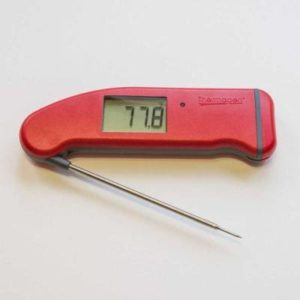Describing a dream niche for online sales

When considering potential products and services to offer, it can be useful to look at the nature of the target audiences involved. Inbound marketing based on niche communities represent the ultimate dream for retailers that want to sell direct at incredible margins. Some groups can be more readily persuaded to buy online and to help evangelize a product solution.
So what does an ideal niche look like? Here’s a checklist of desirable audience traits to test product ideas against.
Traits of an ideal niche audience
Readily targetable – using advertising or organic means, it’s possible to make content and messaging available to your group. Having a unique user persona is great but it will be of limited use if you’re not able to identify similar users in the marketplace or to reach them.
Impressionable – Some groups are more open to persuasion than others. Users that follow influencers on social media or that read learning publications or videos, show that they are interested in advice and suggestions.
Self-motivated – Offering utilitarian products has its place. For the small brand selling online though, it’s especially helpful to operate in an industry where the users are motivated by personal passion. That could be a cause, a personal hobby, a mark of individualism or other thing that generates emotion.
Buying power – Audience members should be willing and able to buy online. That doesn’t necessarily mean that they’re ultra wealthy as long as they have some discretionary income. These users should be comfortable moving from browse to purchase without getting overly caught up with privacy or security concerns.
Part of a community – If there isn’t a place to discuss the industry you can always create something and add value by cultivating it. But it’s even better if there’s an existing one that you can leverage and participate in. Online discussion boards or meetups provide a great way to hear from potential customers directly and you can mine the existing chatter for clues about what motivates purchasing behavior.
Example Niches – Meat Thermometers and Carbide Chisels
 Hobbyists that don’t do work as a professional but that want to dabble are a prime opportunity for niche brands. There are plenty of weekend warriors that want to buy their way into upping their game, whatever that game may be. One example of a brand that benefits from this kind of audience is Thermoworks, who is the undisputed leader in digital meat thermometers. Chefs swear by the Thermapen, considered the Cadillac of instant read thermometers for its accuracy and speed. Home chefs likely have very little need for a thermometer that can measure accurately to the tenth of a degree, or that can create a readout in 3 seconds instead of 10 seconds. But if they just spent thousands on a new outdoor kitchen and want to follow their Big Green Egg recipes closely, spending $100 to get the best thermometer seems worth it. This kind of narrow focus has allowed Thermoworks to attain an enviable market leader position and they have such a cult following that they can afford to avoid marketplaces like Amazon.com entirely.
Hobbyists that don’t do work as a professional but that want to dabble are a prime opportunity for niche brands. There are plenty of weekend warriors that want to buy their way into upping their game, whatever that game may be. One example of a brand that benefits from this kind of audience is Thermoworks, who is the undisputed leader in digital meat thermometers. Chefs swear by the Thermapen, considered the Cadillac of instant read thermometers for its accuracy and speed. Home chefs likely have very little need for a thermometer that can measure accurately to the tenth of a degree, or that can create a readout in 3 seconds instead of 10 seconds. But if they just spent thousands on a new outdoor kitchen and want to follow their Big Green Egg recipes closely, spending $100 to get the best thermometer seems worth it. This kind of narrow focus has allowed Thermoworks to attain an enviable market leader position and they have such a cult following that they can afford to avoid marketplaces like Amazon.com entirely.
 The content opportunity for brands catering to a specific niche is to show the output that pros get out of their high end tools. By demonstrating what’s possible, ambitious amateurs are offered a tempting shortcut to improving their own skills. And while huge hobby categories like woodworking have been crowded with vendors forever, there are sub-categories with specialized tools like creating bowls from stumps through wood turning. As an interested beginner you can get a cheap set of chisels from Harbor Freight to do the job. But if you want to use the tools that the big accounts on Instagram use to create their works of art, you’ll have to pop for a premium brand like Robert Sorby and their titanium-nitride Turnmaster with tungsten carbide cutting head.
The content opportunity for brands catering to a specific niche is to show the output that pros get out of their high end tools. By demonstrating what’s possible, ambitious amateurs are offered a tempting shortcut to improving their own skills. And while huge hobby categories like woodworking have been crowded with vendors forever, there are sub-categories with specialized tools like creating bowls from stumps through wood turning. As an interested beginner you can get a cheap set of chisels from Harbor Freight to do the job. But if you want to use the tools that the big accounts on Instagram use to create their works of art, you’ll have to pop for a premium brand like Robert Sorby and their titanium-nitride Turnmaster with tungsten carbide cutting head.
Inspiration
So where do you go to find categories, sub-categories and sub-sub-categories? Communities are a good place to start. Anywhere people organize to discuss their passions and hobbies can be a great source for ideas. There is a seemingly unending supply of obscure subreddits where users discuss their unique needs and preferred brands. Sites like subredditstats.com can help to identify groups that are gaining momentum. Meetup.org is another place to see how people self-identify around interests. This can be a good way to spot emerging trends to seek out new opportunities. Axe throwing, whiskey tasting and creating and ice carousels have only recently become relatively mainstream and each have their own accompanying set of specialized accessories.
Moving in and taking over
Once a community is identified, it’s best to create a product offering at the high end of the market to command the best prices, presuming you can demonstrate that your product is obviously much better than the others. But that is easier said than done, especially for lucrative niche markets. As an alternative, you can position yourself as the affordable version of an existing brand (like RTIC did for YETI) or create an ordering experience that’s faster or easier than the rest (like Bulk Reef Supply did for salt water aquarium hobbyists) or another way of differentiating from the current line up. The products may seem weird to the general public, but to the right audience they’re the stuff of dreams.

